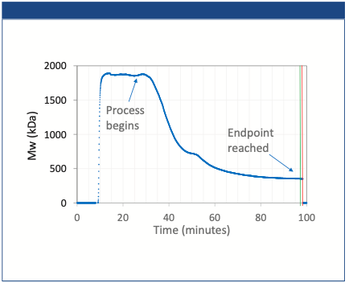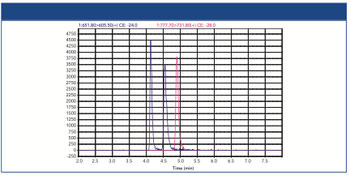
Comprehensive Screen of Acidic/Neutral/Basic Drugs from Urine and Plasma Using Micro-PrepTM HLB and MMCX Extraction Plates and Analysis on LC–MS/MS
Analytical toxicology involves methods for comprehensive screening of biological matrices for the presence of abused drugs. Routine analysis of samples in clinical and forensic settings demands quick and efficient extraction procedures. Smaller sorbent amounts utilized by solid-phase extraction (SPE) products allow scaling-down of starting sample size and minimize the total solvent volumes required to wash matrix components and elute the target analytes. A 2 mg or less measure of sorbent particles embedded in a disc membrane allows for sample enrichment and high throughput processing. As compared to loose sorbent, disk format eliminates channeling effects and reduces dead volume. Removal of the evaporation step from the procedure also decreases overall turn-around time.
In this application note, methods for extracting a large drugs of abuse panel from urine and plasma using UCT’s Micro-Prep HLB (W96-XTMC-HLB) and MMCX (W96-XTMC-MMCX) microelution plates have been described. HLB consists of a highly retentive uncharged hydrophilic and lipophilic sorbent which can effectively retain a range of acids, neutrals and bases via reverse-phase. The mixed-mode cation exchange chemistry of MMCX allows extraction of polar and non-polar analytes from aqueous samples. HPLC separation was carried out using UCT’s Selectra® PFPP column prior to detection by LC–MS/MS. The pentafluorophenylpropyl phase can undergo dipole-dipole, and pi-pi interactions, imparting unique selectivity and retention mechanisms to the column that distinguish it from a traditional biphenyl phase. Water and methanol consisting of 5 mM ammonium formate and 0.1 % formic acid were used as mobile phase. The total run time was 13 min at a 0.4 mUmin flow rate.
Results
HLB microelution plate utilized to extract urine and plasma quality control samples yielded excellent recoveries for a majority of the analytes in the panel. From a total of 47 drugs, >80% recoveries were achieved for 37 drugs fortified at 5 ng/mL and for 43 drugs spiked at 50 ng/ml. Corresponding RSD values were <10% at both concentration levels. From a total of 50 drugs extracted on the MMCX microelution plate, 45 and 48 drugs showed >80% recoveries at 5 ng/mL and 50 ng/mL respectively. The RSD values for both concentrations were <20%.
Conclusion
The use of UCT Selectra PFPP UH PLC column resulted in excellent peak shape and good linear calibration curves for all the analytes. Excellent recoveries and relative standard deviation (RSD) values confirm both the microelution extraction methods to be efficient. In addition to using minimal wash and elution solvent volumes, the elimination of the drying step reduced the overall processing time to approximately less than 30–40 min. The potential for automation and the option to load the collection plate directly on to the autosampler make this extraction technique very convenient for high throughput forensic and clinical laboratories.
UCT, LLC
2731 Bartram Rd, Bristol, PA 19007
Tel: (800) 385-3153
Email:
Website:
Newsletter
Join the global community of analytical scientists who trust LCGC for insights on the latest techniques, trends, and expert solutions in chromatography.



